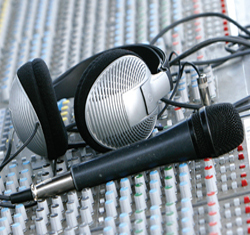
As the band kicks out the jams, my approach is to bring up drums one at a time and do a rough EQ, then all the drums and refine the EQ. Add bass, check the drums and bass combo, then EQ the bass.
Next, lay guitars on top, get a rough EQ, and touch up bass and drums. Then give a listen to just guitar and bass without drums, and EQ them to fit.
All the while, I’m dialing in my compressors and gates. I finish with muting all the other mics and EQ’ing vocals with the full band playing. Then vocals, add in guitars, add bass, and then add drums. My headphones are always at the ready for cuing up and checking certain things.
If specific issues come up while the band is playing, hey, don’t worry about it yet. Get the rest of the sounds together first. The goal is obtaining a solid grasp of the bigger picture in the time it takes to test one mic at a time.
Plus you’re actually mixing, and are free to make drastic changes to hear those blends and combinations in a way that you can never do during an actual show. You’re also now the coolest engineer the band’s ever worked with.
Back In The Day
I started using a version of this approach about 25 years ago with a 60-piece orchestra I mixed weekly. Due to wind and the size of the area being covered, there was the need to rely on fairly close mic’ing, and ended up with about 24 inputs.
It dawned on me pretty quickly that the whole “O.K., now will the third flute please play” method was a complete waste of time and left me scrambling to try to scrape a mix together when the show began.
So I devised a plan. Turn every gain knob all the way up, and have every channel muted with the fader down. As the various orchestra members showed up, tuned their instruments, and began playing, the clip light for the mic(s) near them would come on.
I would crank the gain down to below clip, PFL that channel to make sure it sounded fine, and then un-mute so I knew which channels had the gains set. As the channels were un-muted, I brought those faders up and began blending and EQ’ing, while waiting for the next clip light.
Finally, the conductor would have the orchestra play a short segment, and that was that. The whole process took about 15 to 20 minutes, I had the mix together, and then had time to go to the stage to fix any issues before the show started.
Dave Rat heads up Rat Sound Systems Inc., based in Southern California, and has also been a mix engineer for more than 30 years.
